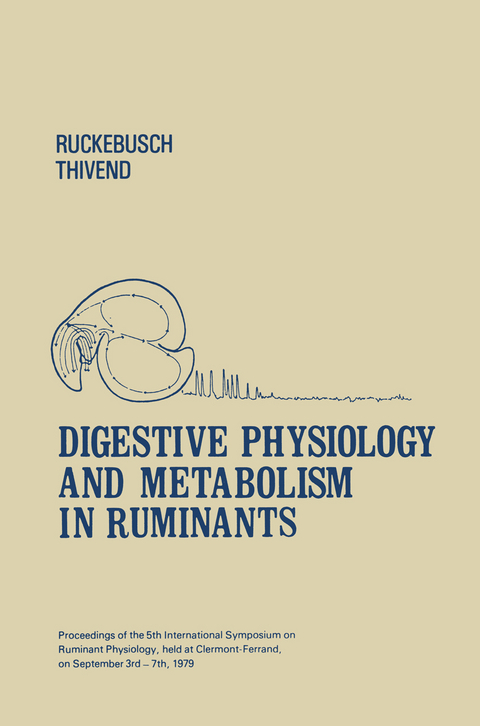
Digestive Physiology and Metabolism in Ruminants
Springer (Verlag)
978-94-011-8069-6 (ISBN)
1 Historical profile of early digestive studies.- 1 Historical profile of early digestive studies.- Section I Gastrointestinal Motility.- 2 The mixing and propulsion of the stomach contents of ruminants.- 3 Rhythms of abomaso-intestinal motility.- 4 The mechanisms controlling abomasal emptying and secretion.- Section II Behavioural Physiology and Nutrition.- 5 Ingestive behaviour and related activities in ruminants.- 6 Learning and associated factors in ruminant feeding behavior.- 7 Hormones and metabolites in the control of food intake.- 8 Central control of water and salt intake in goats and sheep.- Section III Microbial Ecosystem in the Rumen.- 9 Microbial ecology of the rumen.- 10 Factors affecting microbial growth yields in the reticulo-rumen.- 11 Adherent rumen bacteria - their role in the digestion of plant material, urea and epithelial cells.- 12 Mathematical modelling in analyses of ruminant digestive function:philosophy, methodology and application.- Section IV Ruminant Digestion and its Manipulation.- 13 Digestion and end-product formation in the rumen from production rations.- 14 The effect of conservation and processing on the digestion of forages by ruminants.- 15 Possible nutritional constraints in meeting energy and amino acid requirements of the highly productive ruminant.- 16 Chemical control of rumen microbial metabolism.- 17 The pathophysiological effects of gastrointestinal and liver parasites in sheep.- Section V Mineral Metabolism.- 18 Influence of minerals in rumen microbial digestion.- 19 Dietary composition and the absorption of trace elements by ruminants.- 20 Calcium and phosphate homeostasis in ruminants and its relationship to the aetiology and prevention of parturient paresis.- 21 Magnesium metabolism and hypomagnesaemia.- Section VI Intermediary Metabolism.- 22 Energy costs of digestion and metabolism in the gut.- 23 Propionate metabolism and vitamin B12.- 24 Amino acid metabolism and hormonal control during growth.- 25 Lactic acid metabolism.- 26 Mobilization, turnover and disposition of adipose tissue lipids.- Section VII Digestive Adaptation.- 27 Digestive adaptation in the preruminant.- 28 Adaptation to changes in dietary composition, level and frequency of feeding.- 29 Adaptation to diets containing significant amounts of non-protein nitrogen.- 30 Utilization of tropical feeds by ruminants.- 31 Processing of animal waste by feeding to ruminants.- Section VIII Comparative Digestive Physiology.- 32 Evolution of microbial digestion in mammals.- 33 Microbial digestion: rumen versus large intestine.- 34 Coprophagy and related strategies for digesta utilization.- 35 The role of the ruminant’s digestive tract as a water reservoir.- 36 The digestive physiology of wild ruminants.- 37 The place of herbivores in the agricultural ecosystems.- Workshops.
| Zusatzinfo | 854 p. |
|---|---|
| Verlagsort | Dordrecht |
| Sprache | englisch |
| Maße | 155 x 235 mm |
| Themenwelt | Naturwissenschaften ► Biologie ► Zoologie |
| Veterinärmedizin | |
| ISBN-10 | 94-011-8069-5 / 9401180695 |
| ISBN-13 | 978-94-011-8069-6 / 9789401180696 |
| Zustand | Neuware |
| Haben Sie eine Frage zum Produkt? |
aus dem Bereich


